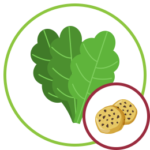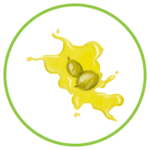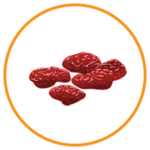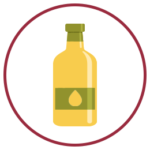Dear Reader,
You made it through the first module! Hope the objectives were not too invasive and the supplementary readings proved useful.
The first module briefly touched upon several dietary essentials, but now let’s dive deeper into diet and nutrition to solidify this important base.
Why Return to Diet?
Though the role of diet is not clearly established in the case of seborrheic dermatitis, it has a direct impact on immune function, circulating hormones, nutritional stability, sebaceous gland activity and blood lipid levels. Not to mention, that diet is known to have an influential role in an Rosacea progression (which often overlaps with seborrheic dermatitis).
Thus, further improving your diet can be a critical component of reducing systemic inflammation and ensuring long term progress.
Introductory Readings
Once again, reading the relative sections can help put some perspective on the objectives presented and help motivate your progress. The reading shouldn’t take any longer then 10-15 minutes and is available below:
Expected Outcomes
By understanding the basic components of a balanced diet and adjusting your eating habits to fit within these principles you should benefit from:
- Improved blood lipid balance
- Stabilized sebum production and composition
- Improved hormonal stability
- Improved blood sugar control
- Improved essential fatty acid profile
- Reduced levels of inflammation
Objectives in Focus
The focus of this module is on two primary components:

Balancing Glycemic Load
Eating foods with a low glycemic index can improve blood sugar stability, hormonal stability, and lipid metabolism; leading to more balanced sebum production and improved sebum composition.

Balancing Dietary Fats
Reducing intake of monounsaturated and saturated fats can enhance the anti-inflammatory effects of a diet rich in omega 3s and potentially reduce the amount oleic acid present in the sebum; leading to improved skin barrier function and sebum composition.
Foods to Emphasize

Fish
Regular consumption of fresh fatty fish can reduce systemic inflammation, improve lipid metabolism and enhance overall immune system stability; resulting in healthier sebum composition and reduced hypersensitivity.

Flax Seed Oil
Flax seed oil is the best plant source of omega 3 fatty acids. Regular consumption can stabilize systemic inflammation and improve lipid metabolism; leading to reduced skin sensitivity and improved sebum composition.

Raw Foods
Making sure your diet includes enough raw vegetables is a simple way to reduce the risk of disease, stabilize immune function and improve antioxidant availability; all of which are important for healthier skin and reduced levels of systemic inflammation.

Barberry
Barberries are small tart berries commonly used in middle eastern cuisine. Their usage in the North America is limited, but the flowering plant is best known for it's high berberine content.
Foods to Restrict
Example Daily Checklist
- Consume at-least one serving of a low Glycemic Index food per meal
- Consume at-least one serving of a raw vegetable(s) with each meal
- Avoid sequential consumption of high Glycemic Index snacks
- Consume small portion (about a teaspoon) of dried barberries each day
- Eat fresh fatty fish in at-least 3 meals of the week
- Introduce 1 tablespoon of flax seed oil per day
(Not required if your consuming fatty fish on a regular basis) - Cut out as much added vegetable oil as possible
- Decrease overall intake of fatty foods
Objectives can overlap
Multiple objectives can be hit with one single serving of select fruits and vegetables (such as apples); which are high in soluble fiber, in their raw form and have a low GI.
Ending Remarks:
Hope you’ve already started seeing some progress from the first module’s objectives; if not in your skin symptoms, perhaps at-least in your general health and well-being.
Remember, the goal of the protocol is not instant relief, this is what topical treatments are designed to achieve. The goal is to build foundational habits to secure long term progress.


 Getting Started
Getting Started Improving Digestion
Improving Digestion Achieving Dietary Balance
Achieving Dietary Balance Controlling Stress and Anxiety
Controlling Stress and Anxiety Lifestyle Adjustments
Lifestyle Adjustments Reducing Irritation
Reducing Irritation Improving Barrier Function
Improving Barrier Function
This information all seems to be spot on! I am curious to your thoughts on the effecacy of a ketogenic diet on this condition.